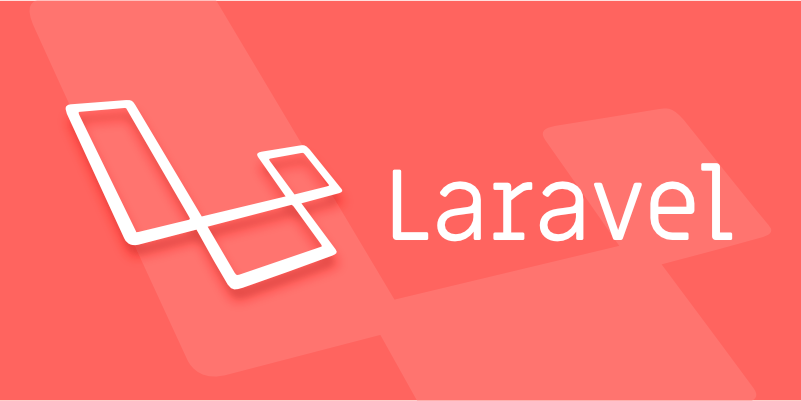Populating databases for development and testing with Laravel
Jul 03, 2025 am 01:31 AMLaravel provides multiple ways to populate databases to support development and testing. 1. Use Seeder to insert fixed test data, suitable for small-scale data sets; 2. Use Factory to generate diverse and realistic data, suitable for simulating large amounts of records; 3. Real data can be exported and desensitized from production environments to discover potential problems. The appropriate method should be selected according to the needs and used reasonably.

When you're working on a Laravel project, having realistic data in your database is cruel for both development and testing. It helps you see how the app behaves under real-world conditions without relying on empty tables or hardcoded values. The good news is Laravel gives you solid tools to do this efficiently.

Using Seeders to Fill Your Database
Laravel's seeder system lets you insert test data directly into your tables. You start by creating a seeder class using php artisan make:seeder . Then, in the run method, you can use Eloquent or the Query Builder to insert records.

For example, if you have a users table, you might write something like:
User::create([
'name' => 'John Doe',
'email' => 'john@example.com',
'password' => bcrypt('secret'),
]);This works fine for small datasets. But if you need more flexibility or volume, consider combining seeders with factories.

Generating Realistic Test Data with Factory
Factoryes are ideal when you want to generate multiple records with vary but realistic-looking data. You define a factory for each model, usually stored in database/factories , and then use it inside seeders or tests.
A basic UserFactory might look like this:
$factory->define(User::class, function (Faker $faker) {
Return [
'name' => $faker->name,
'email' => $faker->unique()->safeEmail,
'password' => bcrypt('password'),
];
});Once set up, you can call it from a seeder like:
User::factory()->count(50)->create();
This creates 50 users with unique names and emails. You can also tweak individual fields or relationships as needed.
Some tips:
- Use
$fakerwisely — it has lots of built-in methods for addresses, phone numbers, dates, etc. - For related models, use
has()orfor()to attach them properly. - Don't overdo it — keep generated data relevant to what you're testing.
Using Real Data from Production (Safely)
Sometimes, you need truly realistic data that reflects actual usage patterns. In those cases, pulling anonymized data from production can be useful.
How to do it:
- Export a subset of your production database.
- Strip out sensitive info (like emails, passwords, personal names).
- Import into your dev environment.
But be careful — live data may include edge cases or inconsistencies that could break your tests if not handled.
Also, always ensure compliance with privacy rules. Never expose user data accidentally.
Wrapping Up
Populating databases in Laravel doesn't have to be tedious. Seeders are great for known, fixed data. Factory help simulate variety. And real-world data from production can uncover hidden issues — as long as it's sanitized.
Use these tools together and you'll have a solid setup for development and testing.
The above is the detailed content of Populating databases for development and testing with Laravel. For more information, please follow other related articles on the PHP Chinese website!

Hot AI Tools

Undress AI Tool
Undress images for free

Undresser.AI Undress
AI-powered app for creating realistic nude photos

AI Clothes Remover
Online AI tool for removing clothes from photos.

Clothoff.io
AI clothes remover

Video Face Swap
Swap faces in any video effortlessly with our completely free AI face swap tool!

Hot Article

Hot Tools

Notepad++7.3.1
Easy-to-use and free code editor

SublimeText3 Chinese version
Chinese version, very easy to use

Zend Studio 13.0.1
Powerful PHP integrated development environment

Dreamweaver CS6
Visual web development tools

SublimeText3 Mac version
God-level code editing software (SublimeText3)

Hot Topics
 How to create Laravel package (Package) development?
May 29, 2025 pm 09:12 PM
How to create Laravel package (Package) development?
May 29, 2025 pm 09:12 PM
The steps to create a package in Laravel include: 1) Understanding the advantages of packages, such as modularity and reuse; 2) following Laravel naming and structural specifications; 3) creating a service provider using artisan command; 4) publishing configuration files correctly; 5) managing version control and publishing to Packagist; 6) performing rigorous testing; 7) writing detailed documentation; 8) ensuring compatibility with different Laravel versions.
 What is Middleware in Laravel? How to use it?
May 29, 2025 pm 09:27 PM
What is Middleware in Laravel? How to use it?
May 29, 2025 pm 09:27 PM
Middleware is a filtering mechanism in Laravel that is used to intercept and process HTTP requests. Use steps: 1. Create middleware: Use the command "phpartisanmake:middlewareCheckRole". 2. Define processing logic: Write specific logic in the generated file. 3. Register middleware: Add middleware in Kernel.php. 4. Use middleware: Apply middleware in routing definition.
 sql database statements summary of common statements for sql database
May 28, 2025 pm 08:12 PM
sql database statements summary of common statements for sql database
May 28, 2025 pm 08:12 PM
Common SQL statements include: 1. CREATETABLE creates tables, such as CREATETABLEemployees(idINTPRIMARYKEY, nameVARCHAR(100), salaryDECIMAL(10,2)); 2. CREATEINDEX creates indexes, such as CREATEINDEXidx_nameONemployees(name); 3. INSERTINTO inserts data, such as INSERTINTO employeees(id, name, salary)VALUES(1,'JohnDoe',75000.00); 4. SELECT check
 How to view all databases in MongoDB
Jun 04, 2025 pm 10:42 PM
How to view all databases in MongoDB
Jun 04, 2025 pm 10:42 PM
The way to view all databases in MongoDB is to enter the command "showdbs". 1. This command only displays non-empty databases. 2. You can switch the database through the "use" command and insert data to make it display. 3. Pay attention to internal databases such as "local" and "config". 4. When using the driver, you need to use the "listDatabases()" method to obtain detailed information. 5. The "db.stats()" command can view detailed database statistics.
 Laravel Page Cache Policy
May 29, 2025 pm 09:15 PM
Laravel Page Cache Policy
May 29, 2025 pm 09:15 PM
Laravel's page caching strategy can significantly improve website performance. 1) Use cache helper functions to implement page caching, such as the Cache::remember method. 2) Select the appropriate cache backend, such as Redis. 3) Pay attention to data consistency issues, and you can use fine-grained caches or event listeners to clear the cache. 4) Further optimization is combined with routing cache, view cache and cache tags. By rationally applying these strategies, website performance can be effectively improved.
 How to install MySQL 8.0 on Windows/Linux?
Jun 11, 2025 pm 03:25 PM
How to install MySQL 8.0 on Windows/Linux?
Jun 11, 2025 pm 03:25 PM
The key to installing MySQL 8.0 is to follow the steps and pay attention to common problems. It is recommended to use the MSI installation package on Windows. The steps include downloading the installation package, running the installer, selecting the installation type, setting the root password, enabling service startup, and paying attention to port conflicts or manually configuring the ZIP version; Linux (such as Ubuntu) is installed through apt, and the steps are to update the source, installing the server, running security scripts, checking service status, and modifying the root authentication method; no matter which platform, you should modify the default password, create ordinary users, set up firewalls, adjust configuration files to optimize character sets and other parameters to ensure security and normal use.
 Laravel MVC Architecture: what can go wrong?
Jun 05, 2025 am 12:05 AM
Laravel MVC Architecture: what can go wrong?
Jun 05, 2025 am 12:05 AM
Laravel'sMVCarchitecturecanfaceseveralissues:1)Fatcontrollerscanbeavoidedbydelegatinglogictoservices.2)Overloadedmodelsshouldfocusondataaccess.3)Viewsshouldremainsimple,avoidingPHPlogic.4)PerformanceissueslikeN 1queriescanbemitigatedwitheagerloading.
 How to populate test data using Seeder in Laravel?
May 29, 2025 pm 09:21 PM
How to populate test data using Seeder in Laravel?
May 29, 2025 pm 09:21 PM
Using Seeder to fill test data in Laravel is a very practical trick in the development process. Below I will explain in detail how to achieve this, and share some problems and solutions I encountered in actual projects. In Laravel, Seeder is a tool used to populate databases. It can help us quickly generate test data, which facilitates development and testing. Using Seeder not only saves time, but also ensures data consistency, which is especially important for team collaboration and automated testing. I remember that in a project, we needed to generate a large amount of product and user data for an e-commerce platform, and Seeder came in handy at that time. Let's see how to use it. First, make sure your Lara is






